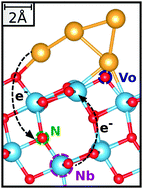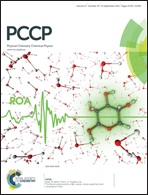Tuning the charge state of Ag and Au atoms and clusters deposited on oxide surfaces by doping: a DFT study of the adsorption properties of nitrogen- and niobium-doped TiO2 and ZrO2†
Abstract
The charge state of Ag and Au atoms and clusters (Ag4 and Au4, Ag5 and Au5) adsorbed on defective TiO2 anatase(101) and tetragonal ZrO2(101) has been systematically investigated as a function of oxide doping and defectivity using a DFT+U approach. As intrinsic defects, we have considered the presence of oxygen vacancies. As extrinsic defects, substitutional nitrogen- and niobium-doping have been investigated, respectively. Both surface and sub-surface defects and dopants have been considered. Whereas on surfaces with oxygen vacancies or Nb-doping, atoms and clusters may become negatively charged, N-doping always leads to the formation of positively charged adsorbates, independently of the supporting material (TiO2 or ZrO2). This suggests the possibility to tune the electronic properties of supported metal clusters by selective doping of the oxide support, an effect that may result in complete changes in chemical reactivity.


 Please wait while we load your content...
Please wait while we load your content...